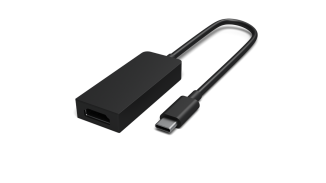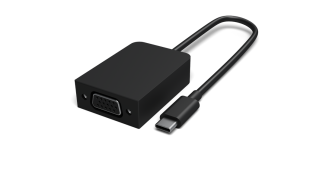Use a Surface USB-C to display adapter
Applies To
See things on a bigger screen by connecting one of the Surface USB-C to display adapters to an external monitor or TV. Here’s what you’ll need:
-
A Surface device that has USB-C port. To determine if a Surface has a USB-C port, check the features page for the device. To do this, go to Find out which Surface model you have, and then select the Surface device on the left-hand side.
-
A Surface USB-C to display adapter. In addition to a Designed for Surface adapter, any of the following may be used:
Adapters
Daisy chain support
Audio Support
Maximum resolution
Surface USB-C to DisplayPort
3840 x 2160 @ 60Hz
Surface USB-C to HDMI
3840 x 2160 @ 60Hz
Surface USB-C to VGA
1920 x 1200 @ 60Hz
-
An external display and video cable. The video cable and Surface adapter you need depends on which type of video port is on your external display. For example, if your external display has a DisplayPort, you will need a DisplayPort video cable and the Surface USB-C to DisplayPort adapter.
Connect the adapter to your Surface and external display
-
Take the video cable that’s connected to your external display and then plug the other end of it into the adapter.
-
Plug the USB-C end of the adapter into the USB-C port on your Surface.
-
Press the Windows logo key + P and select how you want to project to your external display.
For more help on connecting your external display, see Connect Surface to an external display.















